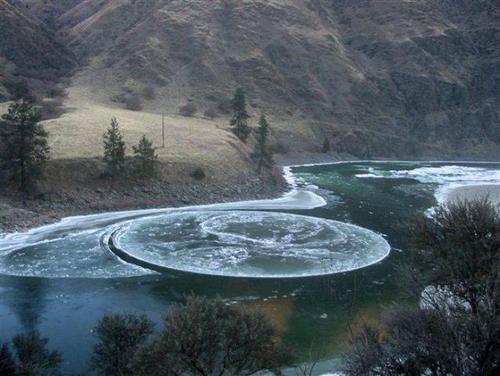Ice discs form on the outer bends in a river where the accelerating water creates a force called 'rotational shear', which breaks off a chunk of ice and twists it around. As the disc rotates, it grinds against surrounding ice — smoothing into a circle. A relatively uncommon phenomenon, one of the earliest recordings is of a slowly revolving disc spotted on the Mianus River (Stamford, USA) and reported in an 1895 edition of Scientific American.
River specialists state that ice pans are "surface slabs of ice that form in the center of a lake or creek, instead of along the water’s edge. As water cools, it releases heat that turns into 'frazil ice' that can cluster together into a pan-shaped formation. If an ice pan accumulates enough frazil ice and the current remains slow, the pan may transform into a 'hanging dam', a heavy block of ice with high ridges low centre.







 RSS Feed
RSS Feed